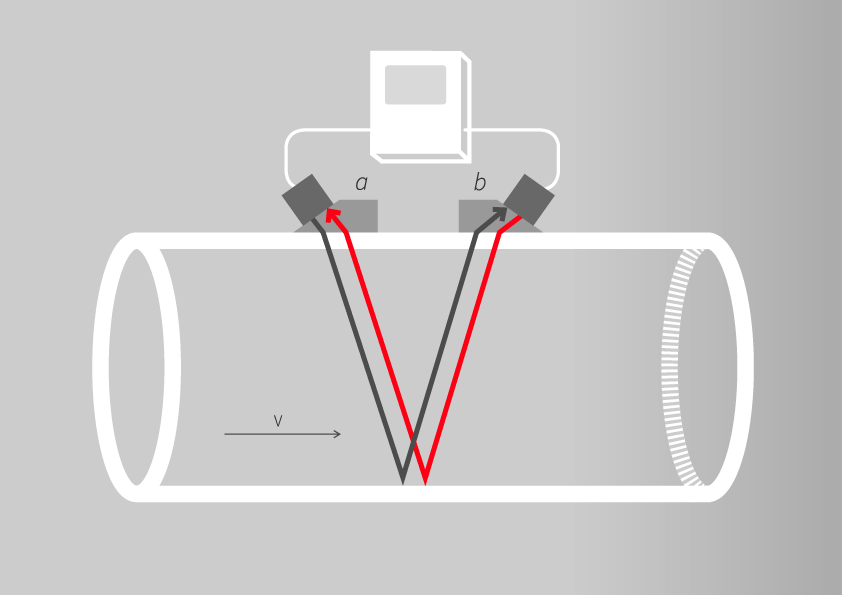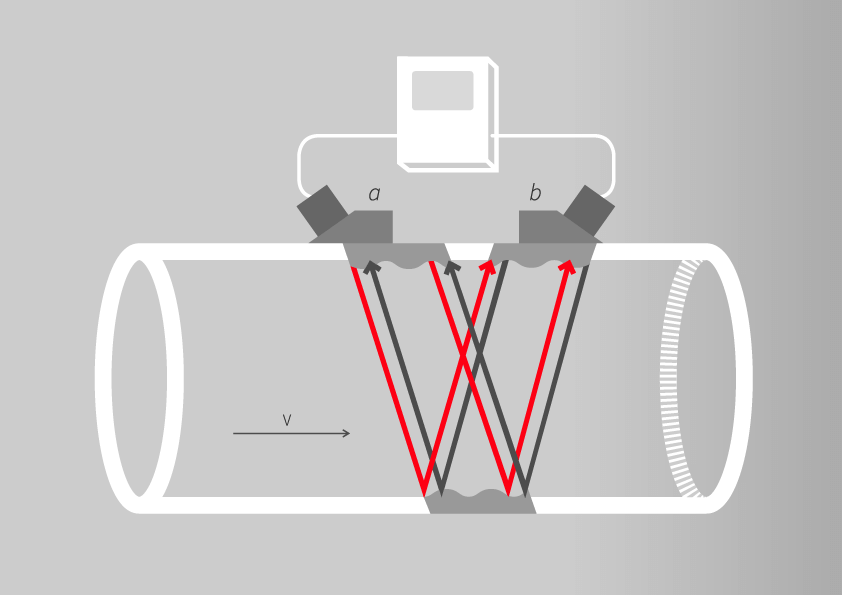When we took the decision to begin the development process of a new gas clamp-on ultrasonic flowmeter we had two clear goals in mind: To be able to provide accurate and reliable flow measurements, and to do so on applications where other existing instruments would not. From that point forward the focus has been on not just developing a technology as good as what was available on the market, but something that took the industry to a new level.
The gas flowmeter retains many of the popular features of the KATflow range such as the robust design, ease of use and high quality sensors but marries this with entirely new ultrasonic hardware. This new generation of instrument was required in order to meet the exacting targets set by the company when measuring a more demanding medium varying conditions.
Katronic ultrasonic gas flowmeters can measure a wide variety of different gases in pipes of up to 1500 mm in diameter. The key feature of our gas technology is that it can take these measurements, in steel pipes, down to atmospheric pressure. The instruments have a measurement range of 0.1 ... 75 m/s of gas with up to 5 % moisture content.
As well as pushing the boundaries of ultrasonic technology we have also taken an innovative approach to sensor design. We did this to achieve a dual-mode gas flow metering capability using the fewest sensor combinations thereby reducing both complexity and cost. We can offer both shear wave and Lamb wave measurement to cover the widest possible range of requirements.
- Innovative sensor assembly design to maximize sensor operational range
- Quantity of different sensor types minimized to avoid confusion and complexity
- Sensors for both shear and Lamb wave measurements
- Option for covered mounting rail for sensor protection
- Simple sensor location and installation
Shear waves are the direct transmission of the ultrasound through both pipe and media and are the standard for ultrasonic liquid flowmeters. The non-invasive measurement of gas flow is more difficult than for liquids owing to the high damping characteristics of the gaseous media. These properties mean that traditional transit-time techniques using shear wave sensors can only be applied for higher pressure gas pipelines.
In order to successfully measure low pressure applications alternative Lamb wave transducers are required. This method involves ultrasonic signals being excited into the pipe at the resonance frequency of the pipe wall and material which causes the pipe to become both the transmitting and sensing device. By operating in this way higher receiving signal amplitudes can be achieved thereby compensating for the signal attenuation of the gas. The active transmission area of the pipe wall created is several times the length of the actual transducer, resulting in broader signal characteristics which allow measurements over a wider range of operating conditions. This is important as temperature, pressure and gas composition can change and the flowmeter needs to be able to adapt to these variations.
- Accurate flow measurement with no pipe modification
- No pressure drop maintaining transmission efficiency
- Zero risk of leakage
- Significant cost saving
- Large measurement range
- Quick installation

 Overview
Overview Oil and Gas
Oil and Gas Manufacturing and Process
Manufacturing and Process Food and Drink
Food and Drink Building Services
Building Services Aircraft and Aerospace
Aircraft and Aerospace Chemical and Petrochemical
Chemical and Petrochemical Power Generation
Power Generation Marine and Shipbuilding
Marine and Shipbuilding Water and Wastewater
Water and Wastewater Pharmaceutical
Pharmaceutical Flowmeter Hire and Rental
Flowmeter Hire and Rental Measurement Service
Measurement Service Training
Training Commissioning
Commissioning Special Solutions
Special Solutions


